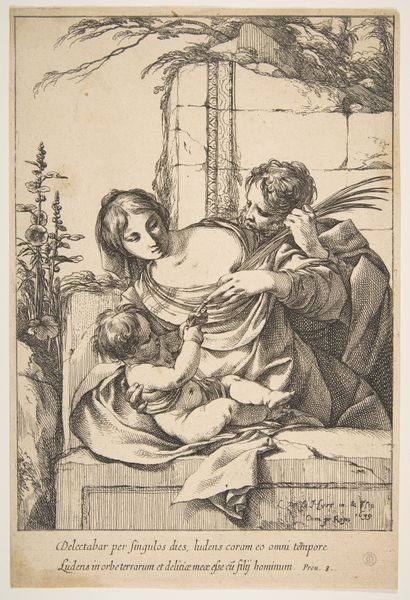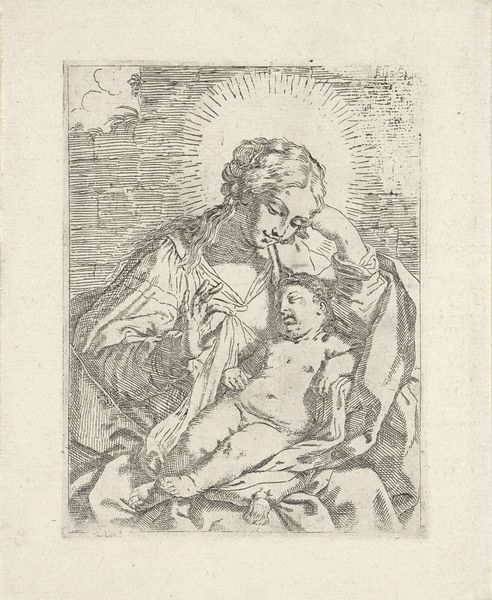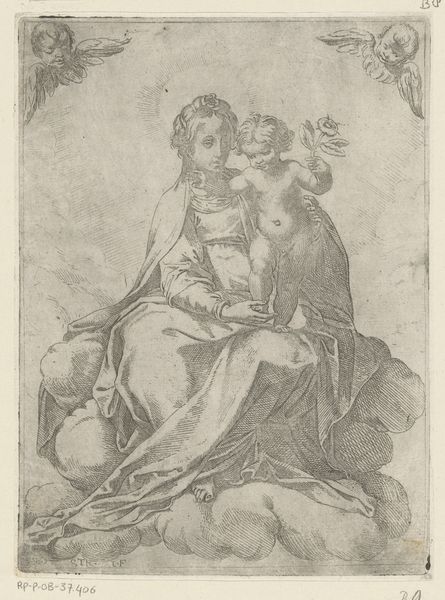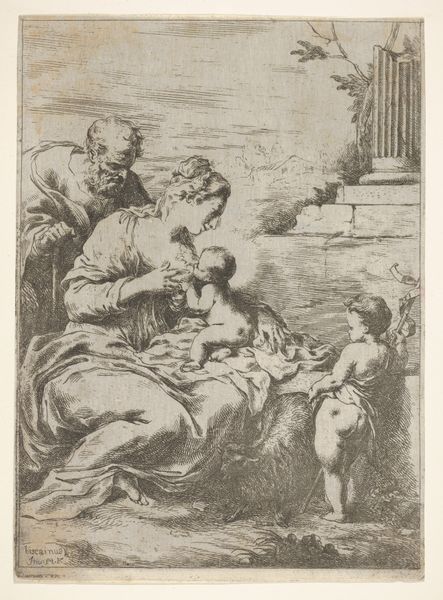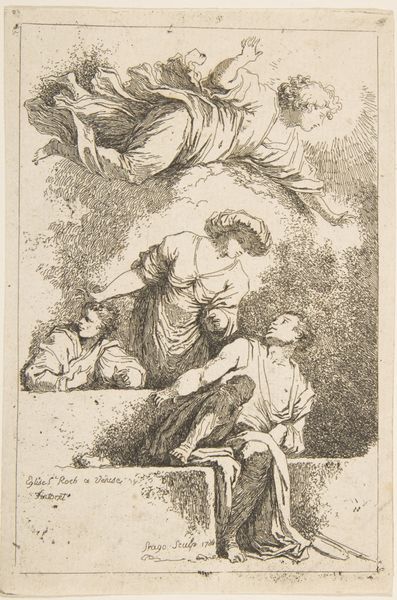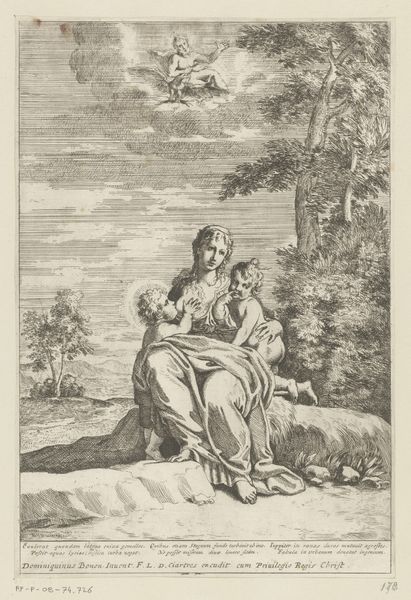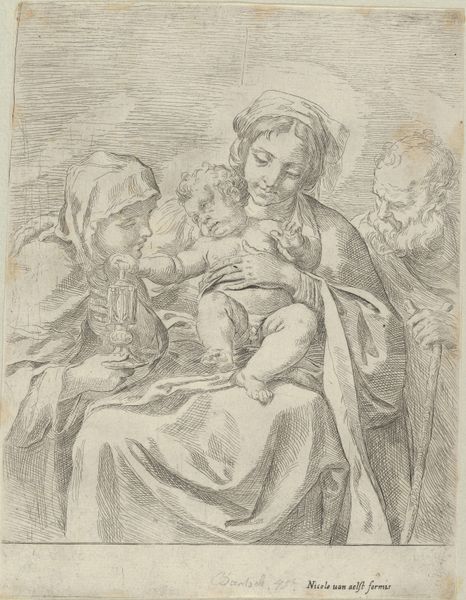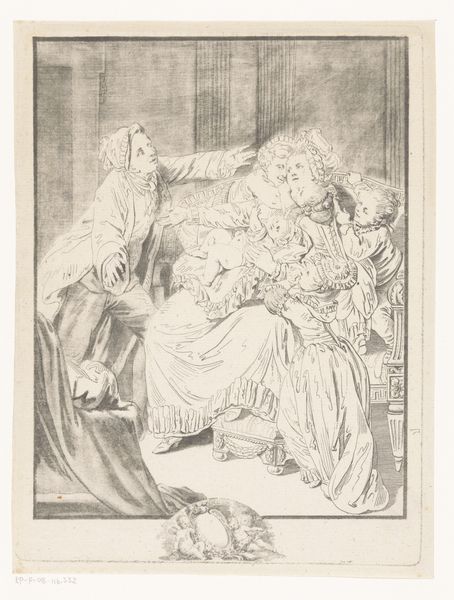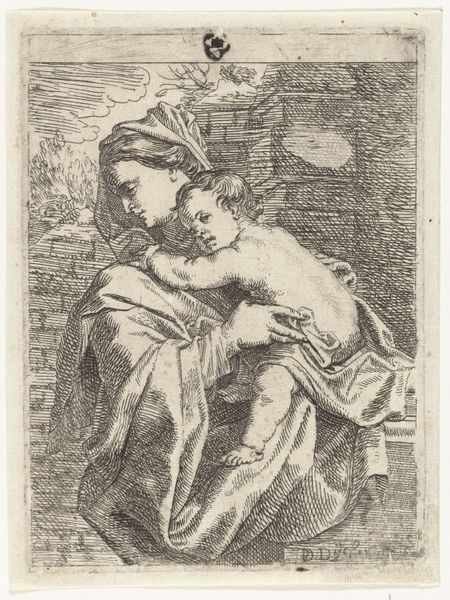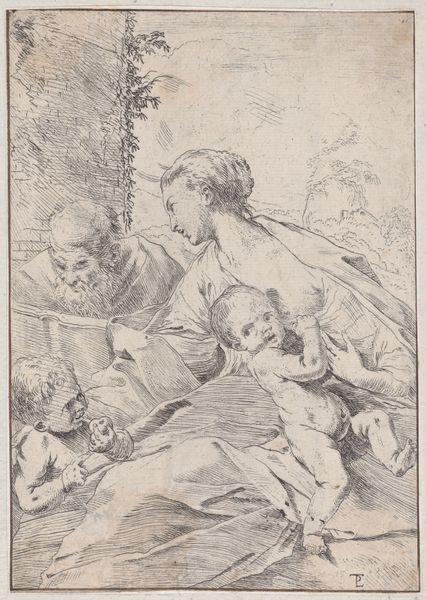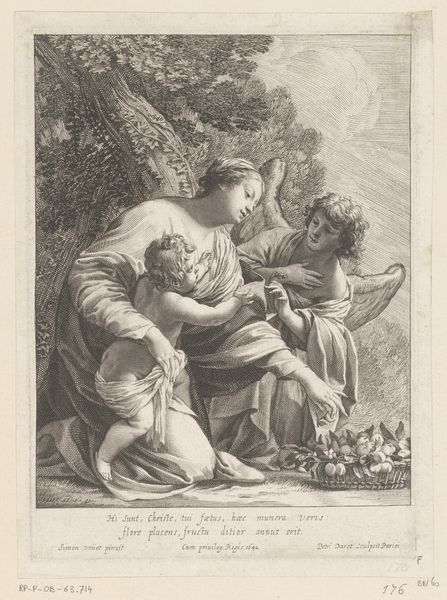
drawing, print, engraving
#
portrait
#
drawing
#
narrative-art
# print
#
old engraving style
#
figuration
#
pencil drawing
#
line
#
italian-renaissance
#
engraving
Dimensions: Sheet (Trimmed): 5 1/4 × 3 7/8 in. (13.4 × 9.8 cm)
Copyright: Public Domain
Giovanni David made this ‘Virgin and Child’ print in 1776, using etching, a printmaking technique that democratized image production. The artwork starts with a metal plate, often copper or zinc, which is coated with a waxy, acid-resistant substance called a ground. The artist then draws on the ground with a pointed needle, exposing the metal. The plate is immersed in acid, which bites into the exposed lines, creating grooves. The longer the plate is exposed to the acid, the deeper the lines become, allowing for tonal variation. After the ground is removed, the plate is inked, and the surface wiped clean, leaving ink only in the etched lines. Finally, the plate is pressed onto paper, transferring the image. David expertly controlled the depth and density of the lines to model form and create shadow, resulting in an intimate portrayal of the Virgin Mary and Christ Child. Understanding this process allows us to appreciate not only the artist’s skill, but also how printmaking fostered the wide dissemination of images during this period.
Comments
No comments
Be the first to comment and join the conversation on the ultimate creative platform.
